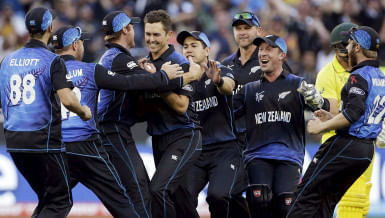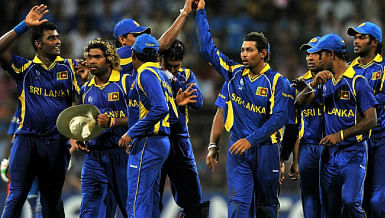At the Kennington Oval in London May 25th -- exactly four days ahead of the 2019 Cricket World Cup – India were bowled out for just 179 runs in 39.2 overs and New Zealand chased down the target easily in a warm-up match. The conditions were conducive to swing and India struggled to adjust to a pitch which they had not expected.
Former India cricketer Sanjay Manjrekar tweeted about taking India’s batting performance with a ‘pinch of salt’. “Pitch today nothing like you would find in the main games. Not as much work has gone into it. So take India’s batting performance with a pinch of salt,” he wrote.
He was right of course. Barring the quite mundane prediction about pitches -- given that ICC events frequently feature sporting pitches, that performance was an outlier for the Kennington Oval. In the last ICC event -- the 2017 ICC Champions Trophy which was played in England -- the average score for teams batting first at that very ground in the last five matches was 290.8.
The match would not have been easier had they posted closer to that average score either. 300-plus totals have been chased down comfortably in this ground. But India’s batting collapse signaled that teams need to be careful how they deal with early losses. Notching high scores is all good and well but in a tournament like the World Cup, teams need something to fall back on when they do not find that winning score they were looking for; the need to find a defendable score. It could be this delicate balancing act that makes the difference in crunch games.
The scores have only gotten bigger in international ODI cricket and the lure of only settling for a big score is always going to prevail. For instance, England possess the deepest batting line-up in the game and are holders of the two highest totals in ODI cricket -- 481/6 against Australia and 444/3. England paceman Mark Wood opined that 500 is now a realistic target for the English side. “That [500] is a realistic target for our one-day team,” Wood told BBC Sport. “It’s almost normal to get 350; 400 is easily gettable. We truly believe that we can chase down high scores, no matter what the opposition get.”
Then what should a batting side really aim for when they bat?
In a recent article by Cricinfo, backed by statistical model, it was argued that a par score should be defined as something that gives a team a batting side 66.67 percent chance of winning. An average score, considered to be the par score by fans and experts alike, does nothing for teams who should be planning around these values. During the first 17 years (1971 to 1986) of ODI cricket, the par score was a middling 252. What about the bowling side? A score of 191 gave them 33.67 percent chance of defending that total during that era.
Before the turn of the millennium, the batting par score had moved up significantly by 14 runs. After 1992, when field restrictions for the first 15 overs began to have an impact, 29 300-plus scores were made. That number shot up quite incredibly as 72 300-plus scores being made between the period of 1997 and 2002. These scores were being chased down as well; 12 occurrences of sides losing after posting 300-plus runs.
With the rise of T20 cricket, that number only rose higher as 17 300-plus scores were chased down between 2008 to 2013; 125 were made in total. The par score went through the ceiling since then. It currently stands at 294 runs. The bowling par score was 209 in 2009 but in 2019 it is 232 – statistically the lowest total that a bowling team can defend one-third of the time.
That study accommodated data up till March this year but a bigger shift is taking place. In England’s recently-concluded series against Pakistan, 350 scores were posted five times in four matches. Pakistan almost chased down England’s 373 in the second ODI and England comfortably chased down Pakistan’s 358 in the third ODI. The lowest total by any of these teams in the series was Pakistan’s 297 in the fifth ODI and the average score for the team batting first was 355.5 and 339.5 for teams batting second.
India captain Virat Kohli knew about that particular challenge too. He had wagered that ‘A bilateral series compared to a World Cup is very different, so you might see lot of 260-270 kind of games and teams successfully defending it because of the pressure factor.”
The reality of the par score in this cricket World Cup could be a very deceptive one. Teams might go out there to post 350-plus scores and comeback with below-par 150s if they are not careful. Naturally, wickets, conditions and opponent team’s bowling strategy will not always fit the batting side. While the pitches will have true bounce and seam movement might be at a minimum, the teams with better bowling lineup will not always disappear. Add to that the weight and pressure of a World Cup match and anything random might happen.
It’s good to set your batting strategy around reaching that par score first and going further after that. More importantly it would be the adjustments to match scenario that will take precedence for smart teams. It is a safe bet that the smartest team usually wins.


 For all latest news, follow The Daily Star's Google News channel.
For all latest news, follow The Daily Star's Google News channel. 









Leave your comments